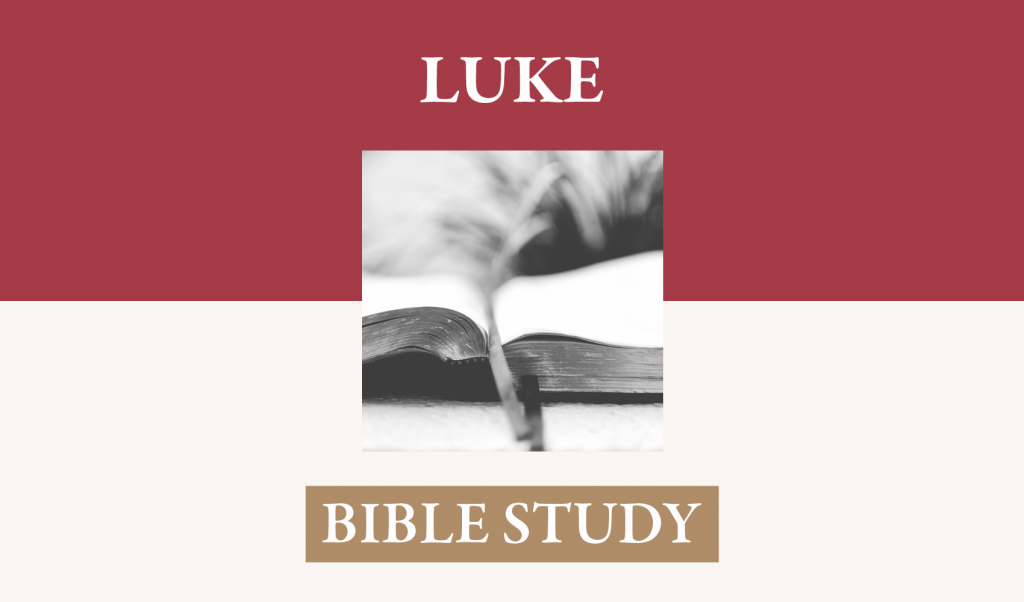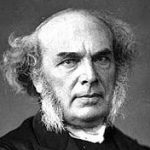Biblical Truth: Unbelievers are lost spiritually, and God desires they be saved.
The Example of Jesus: Luke 15:1-2.
[1] Now all the tax collectors and the sinners were coming near Him to listen to Him. [2] Both the Pharisees and the scribes began to grumble, saying, "This man receives sinners and eats with them." [NASU]
Luke 15 contains three parables. The basic message of the first two parables is the search for that which is lost and the basic emotion expressed is joy when the item is found. They represent Jesus’ explanation of why He relates to tax collectors and sinners. God will go to great effort and rejoice with great joy to find and restore a sinner to Himself. Jesus wishes to emphasize that God is not a God of the few, a God of the wise, or a God only of those who think they pursue God. He is a God who searches, finds, and cares for the sinner. In a culture where tax collectors were hated and sinners were mocked, Jesus gives a word that encourages the rejected to come to Him. The way to God is through repentance. God’s arms are open to the person who will seek Him on His terms.
In verse 1, Jesus’ popularity is highlighted by the exaggerated note that “all” the tax collectors and sinners are drawing near to Him. It is ironic that, following 14:35, it is the tax collectors and sinners that are gathering to “hear” Jesus and not the religious leaders. Evidently, they sense that Jesus cares for them and has something to say to them. But the Jewish leadership complains about Jesus associating with such outcasts. Jesus does not share the separatist mentality of the religious leaders. He is interested in befriending such undesirables, regardless of what others may think. His rationale is simple: He wishes to draw them to God. The point of Luke’s introduction is that the three parables are an apologetic for Jesus’ unusual relationships.
The Lostness of People: Luke 15:11-16.
[11] And He said, "A man had two sons. [12] The younger of them said to his father, ‘Father, give me the share of the estate that falls to me.’ So he divided his wealth between them. [13] And not many days later, the younger son gathered everything together and went on a journey into a distant country, and there he squandered his estate with loose living. [14] Now when he had spent everything, a severe famine occurred in that country, and he began to be impoverished. [15] So he went and hired himself out to one of the citizens of that country, and he sent him into his fields to feed swine. [16] And he would have gladly filled his stomach with the pods that the swine were eating, and no one was giving anything to him.” [NASU]
The third parable in Luke 15 is designed to illustrate heaven’s receptivity toward a sinner’s repentance, as well as to condemn the protest of those who react against such divine generosity. The parable is close to being an allegory, because there are many levels of application, though not all the details should be pressed. Basically, there are three points of contact: the prodigal pictures the sinner, the older son is the self-righteous leadership, and the father pictures God. Sinners are to come to God, and the righteous are to accept the sinner’s decision to turn to Him. It is the father’s reaction to the sons that is at the center of the parable. His response, in turn, instructs people on how they should respond. The basic theme centers on God’s character, and the parable offers vindication of criticism for associating with sinners. God’s forgiveness is always available. No history of sin is too great to be forgiven. Our need is to turn to God and take what He offers on His terms. We need also to accept those who seek forgiveness, for there is joy in heaven over those who repent. One should not compare how God blesses, but be grateful that He does bless. In turning to God, one gains total acceptance and joyful reception into God’s family.
[11-13] A brief introduction simply names the three characters: a father and two sons. The two sons control the literary action, but it is the father’s response to the sons that provides the parable’s lessons by showing how the father views each son’s reaction. The focus of this parable is on the father. The story begins with the younger son requesting to receive the assets that will eventually be his so he can go his own way. The boy is probably in his late teens, since he is still single. If Jewish law prevails, the son would receive half of what the elder son receives, or one-third of the estate. The key element is that the son’s request is graciously granted. Once the son receives his portion, all other claims to the estate are abrogated. The young son’s life collapses soon after his departure. He is obviously anxious to gain his freedom. He converts all his inheritance into cash, goes to a distant land, and squanders his possessions. The son throws away his wealth through an undisciplined, wild life. His approach to life will lead to his downfall. He will quickly come into dire straits.
[14-16] Some of the boy’s hard time is not his own doing. True, he has spent all and has nothing to show for it, but now comes another blow. It is a severe famine. His world is collapsing. With no money, no family, and suffering in a distant land, the boy is in trouble. He enters into poverty and has nowhere to turn. The son responds prudently. Desperate for food and funds, he seeks employment. He works for a Gentile and is sent to an animal farm to supervise the pigs. This was the most dishonorable work for a Jew, since pigs were unclean animals. In effect, the son has taken the lowest job possible, one that no Jew would ever want. The job is unable to meet the prodigal’s needs. He still suffers from hunger. In fact, the pigs are better off than he is. The son wants the meal of unclean animals and cannot have it. How much lower can he go? Worse, there is no one in this distant land to offer him comfort or give him food.
The Grace of God: Luke 15:17-24.
[17] "But when he came to his senses, he said, ‘How many of my father’s hired men have more than enough bread, but I am dying here with hunger! [18] I will get up and go to my father, and will say to him, "Father, I have sinned against heaven, and in your sight; [19] I am no longer worthy to be called your son; make me as one of your hired men."’ [20] So he got up and came to his father. But while he was still a long way off, his father saw him and felt compassion for him, and ran and embraced him and kissed him. [21] And the son said to him, ‘Father, I have sinned against heaven and in your sight; I am no longer worthy to be called your son.’ [22] But the father said to his slaves, ‘Quickly bring out the best robe and put it on him, and put a ring on his hand and sandals on his feet; [23] and bring the fattened calf, kill it, and let us eat and celebrate; [24] for this son of mine was dead and has come to life again; he was lost and has been found.’ And they began to celebrate.” [NASU]
[17-19] The son’s plight finally hits him as he realizes how far he has plunged. There is deep irony in his situation: his father’s hired hands are in better shape than he is. In contrast, the son is perishing from hunger. The son develops a plan of action. The shift from external narration to internal motive reveals a key turning point in the account. The struggling son decides to acknowledge his folly before God and to his father. To speak of sinning before heaven is to acknowledge that one has sinned against God. The son knows he has forfeited all rights to sonship and inheritance, but it is better to cast himself on his father’s mercy than remain in a distant land, living a life lower than the unclean beasts and suffering hunger. The confession pictures his repentance, coming to the father bearing nothing but his need. He plans to turn and come home, openly confessing his failure. His attempt to live carelessly and independent of any constraints is a failure. It has resulted in something less than a human existence. The son decides what he will tell his father. He will place himself at his father’s discretion, assert no rights, and recognize that he has no claims. He is unworthy of being received as a family member. His request is simply for daily care and sustenance as a day laborer, the lowest of three classes of laborers: family, slaves and hired workers. A slave was like part of the family, although part of the lower class. The day laborer was hired only on special occasions for one day at a time, and so was less cared for. The son’s request shows that he wants to be a minimal burden. He is prepared to be the lowest of the low. As one of these laborers, he still will be better off than he now is on his own. He accepts the consequences of his choices. There are no excuses, only confession and a humble request. The picture shows what repentance looks like: no claims, just reliance on God’s mercy and provision.
[20-21] The son departs and carries out his resolution to return and confess. Little can he anticipate the response that awaits him. The father spots him while he is still far away and reacts immediately with compassion and acceptance. As the one who initiates, the father now becomes the center of the story. Surely the son must have wondered how his father would respond to his confession. He does not have to wonder long. The father runs to him and gives him a giant hug, breaking all protocol for a Middle Eastern father. Compassion reigns. The father expresses his joy by greeting the son with a tender kiss of affection. It pictures acceptance of the son before the son says a word. A relationship is being restored. With repentance comes reconciliation. The emotion is basic to the love that exists within a family and powerfully portrays the love of God. Despite the warm welcome, the son offers his confession, just as he had resolved to do. The confession of humility leaves the son in the hands of his father. Those who come humbly to God can know that He will receive them. A picture of genuine repentance is also in view. Such a parallel fits the picture of the sinner who turns to the Father.
[22-24] The father receives the son back with full privileges. The servants are told to clothe the son immediately and put a ring on his finger and sandals on his feet. The robe is a long, flowing garment which is the best clothes he can wear. The receiving of a ring adds to the image of being ornately dressed. The ring may contain a seal and thus represent the son’s membership in the family. The sandals are also a symbol of wealth. The son goes from destitution to restoration. The picture of joy and triumph continues. The father calls for a celebration in honor of his son’s return. They will sacrifice the fattened calf eaten on major religious holidays like the day of atonement. Such an animal was specially fed and prepared for these occasions. The son has been reinstated, and so it is time to eat lavishly and rejoice. In synonymous images laid out in parallelism, the father gives the reason for the celebration. The son has been “resurrected.” The father has regained a “lost” son; the son he expected never to see again has returned. Regaining the lost and the subsequent joy are images that recall the first two parables of this chapter. New life and recovery of the lost are what results from repentance. The father explains the significance of what has happened, and the celebration begins.
Summary. Jesus teaches two major truths in this parable. First, an absolute reversal results from repentance, in that not only is the repentant one restored, but also welcomed by the heavenly Father with joy and total acceptance. The Father receives such a one with open arms and offers His home. Great celebration erupts when a sinner comes to the Father to enter into His care . Second, there is a call to respond to the repentant one, not with comparison or jealousy, but with joy that reflects the Father’s response. If God can be gracious and forgiving, so can people. The story leaves us hanging, for we are not told what the elder son does. The parable is left so that Luke’s readers may reflect on the proper response. Would they, if they were in the brother’s shoes, go inside? Will they share in the joy? Will they join in the opportunity to help the lost find God? Will they join the Father or stay outside? Will they learn from and imitate the father? Grumblers and readers are now faced with a moral choice, and mere spectating is no longer possible. One must choose how to respond to Jesus’ challenge to seek out sinners.
The parable of the forgiving father and his two sons is one of the most illustrative of Jesus’ stories. It truly is a “parable of reversal,” which pictures the beautiful transformation that comes with humble repentance before God. The picture of the Father is particularly instructive. He is running to the one with arms outstretched, ready to hug the returning child, and rejoice in the return. He dispenses gifts richly to those who turn, welcoming them into the family. No matter how destitute the circumstances under which one turns, the Father is there to receive the child back. Such is the joy in heaven over one who repents. This detailed parable complements the two earlier parables of Luke 15 and adds one additional lesson: the response of those who see the Father’s gracious generosity is also to be joy. They are not to act like the elder brother. They are to share in the mission and the joy. It is the hope of restoring the lost and leading people back to the joy of the Father that causes Jesus to receive sinners and dine with tax collectors [15:2]. What is lost must be pursued until it is found. People should not grumble about Jesus’ or his followers’ associations. They should realize that God calls on disciples to encourage the “rejected” to be accepted by God. Part of that call means associating with sinners, not by sharing in unrighteous activities, but by having a relationship with them that is available and approachable. The gospel is not to be hoarded by the righteous, but is to involve them in reclaiming the lost for God. After all, how did those who share the benefits of the gospel come to share in it, except by receiving the same generosity they should now offer to others? God’s love for his community requires that His love for people be displayed by those who claim to know Him. Those who grumble should be criticized, for they refuse to display God’s concern. The prodigal reminds disciples that God calls them to seek the lost and to rejoice when the search is successful. As the Father is gracious, so it should be with His offspring.
Questions for Discussion:
1. What two major truths does Jesus teach in this parable?
2. Often we hear the prodigal son’s journey described as being in the “far country”. But we should recognize that the “far country” is a description of a spiritual journey. We can be dwelling in the “far country” while sitting in a church pew! Unfortunately, this is especially true of our children. We can make every effort to have them grow up in the Lord and be active in our church, but all the time their heart is in the “far country”. Think about your own journey into the “far country”. How did God bring you to your “senses”? What did He use to begin the “great reversal” in your life? How can God use you today to help others around you who are now dwelling in the “far country”? What can you learn from the “father” in this parable?
References:
Luke, Darrell Bock, Baker Books.
Gospel According to Luke, William Hendriksen, Baker Books.

















